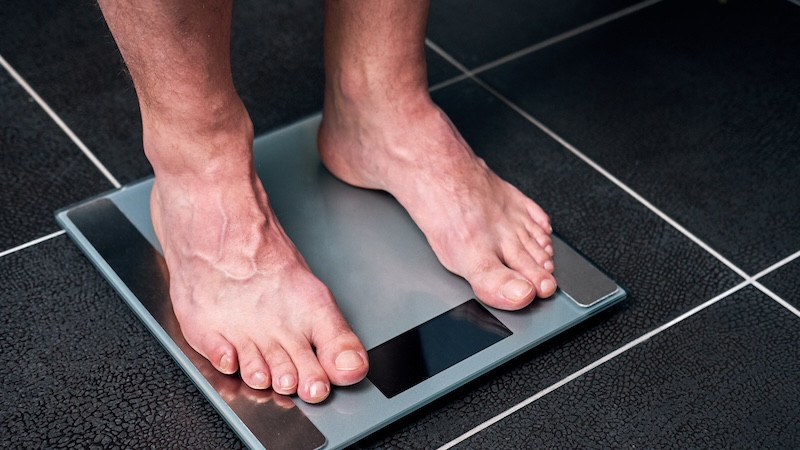Running Safety Tips
Footwear, nighttime gear, helpful gadgets, and more

While running offers a host of benefits, participating requires following precautions to stay safe and uninjured. These running safety tips from the Mayo Clinic can help.
DEAR MAYO CLINIC:
I’m training for my first long-distance race, and I want to be safe on my runs. Unfortunately, due to where I live, the weather is often a challenge. On other days, I’m finding I cannot get in my miles until after dusk. I’m wondering if you have any advice for staying injury-free in cold, rainy or dark conditions.
A host of running safety tips
Training for a distance race means logging a lot of miles — sometimes in cold, rainy or hot weather, sometimes in the early morning or in the evening, sometimes on streets or country roads. No matter the weather, time of day or route, taking precautions to be safe during all your training runs is important.
There are many things to consider safety-wise when outdoors, but among the top on my list are being visible, whether to drivers, bicyclists, or other runners on the road or trail; preventing injury; and being able to summon help if you need it.
You can address these concerns by developing and practicing safe running habits. Having the proper basic gear — down to your socks and shoes — is essential. Also, take advantage of high-tech gadgets designed for runners, such as LED-enhanced gear for running at night and phone apps to track your progress and help motivate you.
Preparing to run
 Dress for the weather and be aware of the forecast. Weather conditions can change rapidly, so consider adding lightweight rain gear or extra gloves to a cinch bag you carry with you.
Dress for the weather and be aware of the forecast. Weather conditions can change rapidly, so consider adding lightweight rain gear or extra gloves to a cinch bag you carry with you.
Be visible. Wear bright colors. In poor light conditions, consider reflective or LED-lighted gear. Check out these products at your local sporting goods store, a running specialty shop or online. Some safety gear includes lighted shoe clips, wrist bands, knuckle lights, vests and headlamps, as well as reflective vests and wrist slap bands.
Wear well-fitting shoes and low-friction socks. Consider these tips for making sure your shoes fit properly:
- Shop in the evening since your feet retain water during the day.
- Visit specialty shoe shops to find the best options, extended sizes and styles as well as support accessories.
- Be aware of any physical issues, such as bunions or hammertoes, which can pose a challenge to footwear. Look for shoes that can accommodate these concerns.
- Take time to break in shoes and go for a walk or jog before going for a full run.
- Speak to a specialist about a gait analysis as the motions you make and the way you run will affect the way a shoe fits.
- Determine your arch type. This information will help you choose the best shoes.
- Replace shoes when needed. Your shoes are going to get a workout as you train. In general, a pair of running shoes lasts 400 to 500 miles or three to four months. Keep an eye on the midsoles and outsoles. If they’re compressed or worn, it’s time to buy a new pair.
Apply anti-chafing agents to “tender” areas. When you run, body parts can rub together or against clothing. This causes friction, which wears away your skin. Sweat can increase chafing. Places to consider protecting include the inner thighs, groin, and nipples.
Let someone know your route and what time you expect to return. Vary your routes for safety and to keep you from getting bored during your training runs.
Consider running in a group for safety, camaraderie, and motivation.
Tips for starting a running or walking program
Running: A healthcare bargain for longevity
Helpful gadgets
Carry pepper spray if running in isolated areas or if there are aggressive dogs along your route.
Take a fully charged phone with you. Not only is the phone for your safety, but it also can help your motivation and pace if paired with music, podcasts or any of the many training apps available to runners. If your phone isn’t ideal, consider a wearable device, like a watch, that may have the capabilities of your phone and allow you to make a call for help.
Use wearable identification with name, address, phone number, emergency contacts and medical information. In a medical emergency, if you can’t speak for yourself, first responders can immediately contact family members and communicate medical conditions or allergy information to medical staff.
More misc. tips for running safety
- Always stay alert and aware of what’s going on around you.
- Keep earbud volume low so you can hear sounds around you.
- When running along roads, follow all traffic rules. Run against the traffic and not with the traffic, run defensively, and be prepared to take evasive action.
- Look both ways at intersections. Make eye contact with drivers stopped at intersections before crossing.
- On multiuse trails, follow the rules of the road. If you alter your direction, look over your shoulder before crossing the path to avoid colliding with a passing runner or cyclist.
- Announce your approach when overtaking and passing other runners.
- Avoid unlit areas, especially at night, and run clear of parked cars and bushes.
- Ignore verbal harassment; keep your distance and keep moving.
- Trust your intuition about a person or an area.
- Don’t forget to warm up before a run and stretch afterwards to help avoid injuries.
Be safe and enjoy your training runs.
— Karla Marley, Physical Therapy, Mayo Clinic Health System, La Crosse, Wisconsin
Mayo Clinic Q & A is an educational resource and doesn’t replace regular medical care. E-mail a question to MayoClinicQ&A@mayo.edu. For more information, visit www.mayoclinic.org.
©2023 Mayo Foundation for Medical Education and Research. All rights reserved. Distributed by Tribune Content Agency, LLC.


